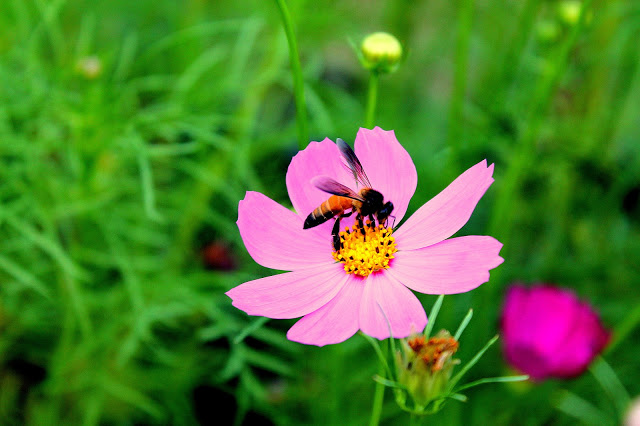“Be free!” It’s an imperative about as American as Hollywood hero movies and pumpkin pie.
Independence is indeed pushed from childhood as the true mark of maturity. But what kind of independence is this? Claiming independence from those who would oppress us, from dictators, from domineering parents, from tired social mores, from our own repressive self-images—history abounds with tales of casting off chains and gaining independence from something. But when we’ve cast off all our chains, what are we left with?
Perhaps some of us have become so addicted to independence from something that we have in turn isolated ourselves and forgotten that life is to be lived with others. What might “independence-with” look like? Would it be a more integrated independence?
No woman (or man) is an island unto herself, and yet so much lifestyle branding stems from just such an idea of the separate, autonomous being.
“He answers to no one but himself!” A self-enclosed, unencumbered notion of the independent individual has perhaps been a useful tool in past historical moments, when the threat to difference and individuality was particularly intense.
Today though it seems that more pain and suffering comes from our own atomized, disconnected way of relating than from any one outside oppressive force.
Might we be, then, seeking independence from our own idea of independence? In place of the old idea we can substitute a new sort of independence, an integrated independence.
The desire for an independence purified of other people and the planet could stem partly from a will-to-cleanliness—a sterile, well-ordered cleanliness of mind, unperturbed by the random chaos of the outside world.
“Relationships are messy. The world is crazy, irrational and uncanny. If I could just separate myself off from all of that, maybe I could sort things out and really find myself.”
The story that says that in order to find yourself you must shut the world out is a myth that evades our essential interconnectedness. Seeing other people and other things as apart from oneself transforms those people and things into aesthetic objects to be consumed or rejected.
Timothy Morton, in his book, The Ecological Thought, thinks this aesthetic vision plays into even our current forms of environmentalism. He gives the example of a community ruling against the installation of wind turbines because it would “destroy the natural beauty.” He asks the poignant question: why can’t wind turbines, as part of a collective effort to reduce carbon emissions, be seen as beautiful?
Morton prescribes a new, more expansive kind of thinking—a thinking that doesn’t stop at humanity or planet Earth but expands into the universe and sees everything: planets, people, black holes, galaxies, animals, and yes, wind turbines, as reflections of ourselves.
To be independent in an integrated way recognizes that you are only truly independent when you can acknowledge your enmeshment and relation to all that is. Nothing is excluded. To deny or exclude anything is to forfeit independence, because this is to deny or exclude a part of oneself.
In other words, integrated independence understands that we are only truly independent when we understand that we are never truly independent, at least in the colloquial sense of “independence-from.”
We can never be separated from our climate, from our history, from the socio-political forces at work in our lives, from our past and future loved ones.
Even a Mongolian farmer or a mountain goat or a galaxy seen by the Hubble telescope twelve billion light years away cannot be cast out as a disconnected entity from our lives. To see it as such is a failure of our thinking, and more importantly, a failure of our imagination.
There are so many avenues to integration, so many places from which to begin the work of integrated practice—perhaps as many as there are bodies in the world. Some of these bodies are smaller than the human eye can see and live under the surface of our skin. In Honor Thy Symbionts, Jeff Leach discusses the biological discovery of symbionts—bacteria and microorganisms that have evolved symbiotically with the human body.
The functioning of our entire system, but especially the intestines, would not be possible without these little guys. Symbionts beautifully disrupt the idea of oneself as singular and individual. Estimates suggest from 500 to 1,000 unique species reside in the ecosystem of our intestines alone. So much for the notion of a fully autonomous self.
If epically small life forms serve the functioning of our body, then perhaps we can begin to imagine how we serve the functioning of the infinitely large. Or, more than this, we can begin to imagine how these microorganisms are also myself, that I have many “centers of gravity,” so to speak, beyond my ego-center. Similarly the planets are me (astrology has been saying it forever), the wind turbines are me, the annoying girl at work is me—reinventing “me” as a more expansive, interconnected, integrated, un-centered openness.
In that shift of understanding lies the seed of compassion, for it is only through identifying with others in all their apparent differences that we begin to collapse the space that only pretends to separate us.
Love elephant and want to go steady?
Sign up for our (curated) daily and weekly newsletters!
Apprentice Editor: Kimby Maxson/Editor: Travis May
Photo: Sandhya Shekar/ Pixoto







Read 0 comments and reply